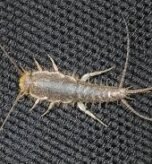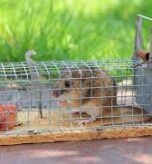Finding cockroach feces, often called ‘frass’, is a critical early warning sign of an infestation. In fact, you will frequently discover this waste even before you spot the pests themselves. A thorough understanding of cockroach feces is crucial for effective pest management and for protecting your health. Beyond their foul appearance, these droppings harbor dangerous substances and emit an unpleasant odor, making timely cleanup essential.
How to Identify Cockroach Feces
The appearance of cockroach feces is distinctive and provides important clues about the species and extent of an infestation. Generally, the droppings are small, dark, and solid.
Identifying Feces by Cockroach Species
The look of the excrement varies depending on the size of the cockroach.
- Small Cockroaches (e.g., German Cockroach): These common pests leave behind droppings that resemble tiny specks of black pepper or dark coffee grounds. Furthermore, you might find dark, smear-like stains on surfaces.
- Large Cockroaches (e.g., American Cockroach): These larger pests produce more substantial, cylindrical pellets. Their droppings are dark brown to black with blunt ends and distinct ridges along their length.
Cockroach Feces vs. Other Pest Droppings
Accurate identification is vital to ensure you use the correct pest control strategy.
- Mouse Droppings: Unlike the waste from cockroaches, mouse droppings typically have pointed ends and are larger, resembling grains of rice.
- Termite Droppings: In contrast, these are much lighter, appearing as light brown or tan pellets.
- Bed Bug Droppings: These usually show up as small, dark brown or black stains that look more like ink spots or smears than solid specks.
Common Hiding Spots for Cockroach Feces
Cockroaches deposit their waste near their hiding spots and food sources. Therefore, you should check dark, warm, and moist locations for signs of their feces.
Common sites include:
- In kitchen cabinets, drawers, and pantries.
- Behind and under appliances like refrigerators, stoves, and microwaves.
- Under sinks and around plumbing fixtures.
- Along baseboards and in the corners of rooms.
- Inside electronics, especially near motors.
- On high surfaces like the tops of cabinets or door frames.
A high concentration of cockroach feces in one area usually indicates a nearby nest.
The Unpleasant Odor of Cockroach Feces
A distinct, unpleasant smell is a major indicator of a cockroach infestation. People often describe this odor as musty, oily, or acrid. This smell comes primarily from aggregation pheromones present in the cockroach feces, which guide other roaches to food and shelter. In addition, mold growing on the feces can contribute to this “cockroach smell.” The odor becomes much more noticeable as an infestation grows and can linger even after you have eliminated the pests.
The Health Dangers of Cockroach Feces
Cockroach feces pose substantial health risks that go far beyond just being a nuisance. Because cockroaches feed on garbage, sewage, and decaying matter, their waste is particularly hazardous.
Allergies and Asthma Triggers
Health experts recognize cockroach feces as one of the most common indoor allergens. Proteins found in their feces, saliva, and shed skins can trigger allergic reactions and asthma attacks. Symptoms can include wheezing, coughing, chest tightness, and difficulty breathing. Consequently, children are at a heightened risk of developing or worsening their asthma due to exposure.
Spreading Dangerous Pathogens
Cockroaches can mechanically transmit a wide range of disease-causing organisms. They pick up microbes from unsanitary environments and then spread them to your food and surfaces through their droppings.
- Bacteria: They can spread E. coli, Staphylococcus, and Salmonella, which cause illnesses like diarrhea and typhoid fever.
- Parasites and Viruses: They have been found to carry Giardia, Rotavirus, and Hepatitis A.
- Fungi: They can carry fungi like Aspergillus, which produces potent toxins.
How to Safely Clean Up Cockroach Feces
Removing cockroach feces is a critical part of managing an infestation and maintaining a hygienic home.
Important Safety Precautions
First and foremost, you must wear protective gear. Always use gloves and a face mask or respirator to avoid inhaling dangerous allergens and pathogens, especially during a large cleanup.
A Step-by-Step Cleanup Guide
- Vacuum First: Use a vacuum cleaner equipped with a HEPA filter to remove loose droppings from surfaces and crevices. This method helps prevent allergens from becoming airborne.
- Disinfect Thoroughly: Next, wash the affected surfaces with soap and warm water. Follow this with a suitable disinfectant, such as a bleach solution or an EPA-registered product. Let the disinfectant sit on the surface for at least 10 minutes before wiping it dry.
- Neutralize Odors: To get rid of any lingering musty smells, you can use baking soda, activated charcoal, or a commercial air freshener.
- Dispose of Waste Properly: Finally, seal all cleaning materials, including paper towels and vacuum bags, in a plastic bag and dispose of it properly.
How to Prevent Cockroaches and Their Feces
Preventing another infestation requires a multi-pronged approach that addresses what attracts cockroaches in the first place.
Maintain Exceptional Cleanliness
You should clean up spills and crumbs immediately. Also, regularly clean your kitchen, including under and behind appliances. Empty trash cans daily and make sure they have sealed lids.
Secure All Food Sources
Store all food, including pet food, in airtight containers. In addition, rinse dirty dishes right away if you cannot wash them immediately.
Control Moisture and Humidity
Promptly repair any leaky pipes or faucets. Use dehumidifiers in damp areas and ensure your bathroom and kitchen have good ventilation to reduce the humidity that cockroaches need to survive.
Seal Entry Points to Your Home
Use caulk or steel wool to seal any cracks or holes in your walls, floors, and around utility pipes. Additionally, install weather stripping around doors and windows to block potential entry points.
When to Call a Pest Control Professional
If your own control methods prove ineffective, or if you are facing a severe or persistent infestation, it is wise to engage a professional pest control service. Pest control experts have the specialized knowledge, tools, and access to more potent treatments to identify and address hidden infestations that you might miss.
Conclusion
The accurate identification of cockroach feces is the fundamental first step in recognizing and addressing an infestation. Understanding their varied appearance, preferred locations, and the significant health risks they present underscores the urgency of prompt action. A combination of comprehensive cleaning and diligent preventative measures—including rigorous sanitation, proper food storage, and effective moisture control—is essential for eradicating infestations and maintaining a healthy living environment. Ultimately, when faced with a challenging infestation, seeking professional pest control assistance provides the most effective and enduring solution.



